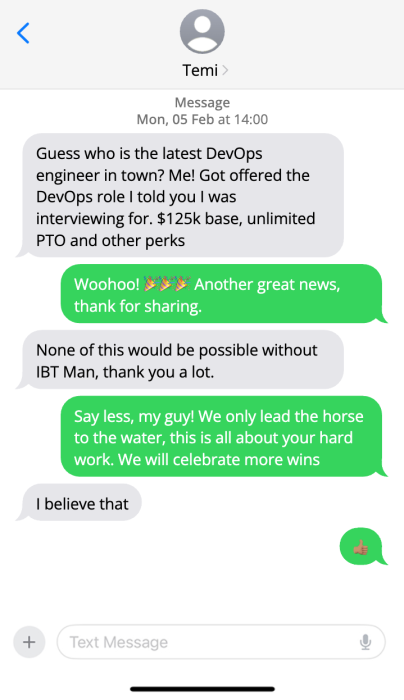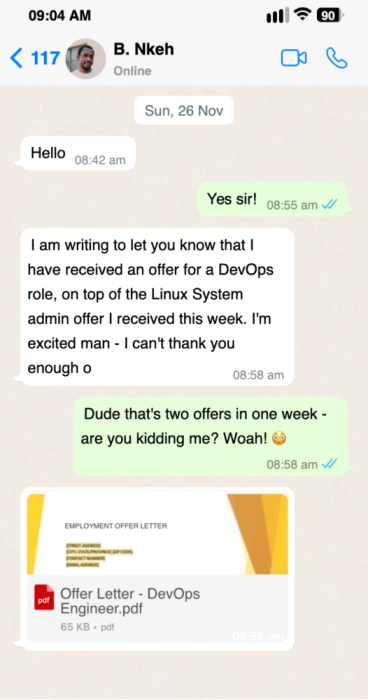Upfront
Secure your spot in our in-demand DevOps course with a hassle-free upfront payment, and learn with peace of mind.
Amount
$1, 350 $1, 700
Sale ends on June 30, 2024
$1, 700
After end of sale
Bootcamp Start Date
July 13, 2024
Pay in 4 With PayPal
Pay in 4 is an interest-free installment loan that lets you split your purchase into 4 payments, with the down payment due at the time of the transaction
Amount
$241
Weekly / 6 Weeks
$1,450 in total payment
Bootcamp Start Date
July 13, 2024
Affirm
Apply for a low-interest loan with Affirm and make small monthly payments. Subject to credit score
Amount
$73.80
Per month | 24 months
$1771.17 total
Bootcamp Start Date
July 13, 2024
Deferred Plan
Apply for deferred payment with our preferred partner Climb Credit and start paying for your program after completion. Subject to credit score.
Amount
$0
Study now, Pay Later
$1,800 total
Bootcamp Start Date
July 13, 2024

































